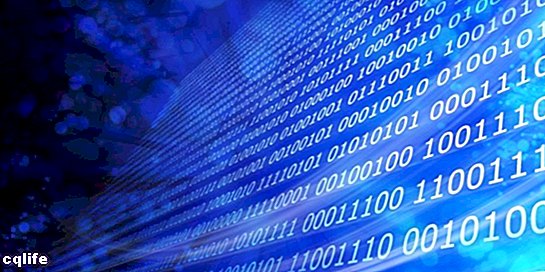We explain what data is in computing and what are the types of data that exist. Also, examples and what is information.

What is a data?
In computing, the data are symbolic representations (that is: numerical, alphabetic, algorithmic, etc.) of a certain attribute or qualitative or quantitative variable, that is: the description encoded of an empirical fact, an event, an entity.
The data is thus the information (values or referents) received by the computer through different means, and that is manipulated through the processing of the algorithms from programming. Its content can be practically any: statistics, numbers, descriptors, which separately have no relevance for the users of the system, but that together can be interpreted to obtain complete and specific information.
In the programming languages, used to create and organize the algorithms that every computer or computational system pursues, the data is the expression of the specific characteristics of the entities on which said algorithms operate. That is, they are the initial input, from which the information can be processed and composed.
They are particularly important for structure data branch computing that studies the particular way of storing information in minimal portions to achieve a later efficient retrieval.
Type of data
In computing, when we speak of types of data (or simply "type") we refer to an attribute that is indicated to the computer regarding the nature of the data that is being processed. This includes delimiting or restricting the data, defining the values it can take, what operations can be performed on it, and so on.
Some types of data are:
- Characters Individual digits that can be represented by numeric data (0-9), letters (a-z), or other symbols.
- Unicode characters. Unicode is an encoding standard that enables data to be represented more efficiently, thus allowing up to 65535 different characters.
- Numeric. They can be real numbers or integers, depending on what is necessary.
- Booleans. They represent logical values (true or false).
Data examples

Some examples of computer data can be those that make up the hierarchy of computer data, in an ascending pyramid from the most basic to the most complex:
- Bits. Each binary code language entry, that is, 1 or 0.
- Characters Numbers, letters or special characters, each formed from a combination of bits. For example: the decimal number 99 corresponds to 1100011 in binary.
- Fields. Set order of characters, for example a word, such as the first and / or last name of the user who fills out an online form.
- Records. Sorted field sets, such as those needed to log into our email.
- Files. Ordered sets of records, such as cookies that websites They save in our system and contain the information of the sessions that we have initiated.
Information (in computing)
In computing, information is understood to be the set of ordered, sequenced data, processed by a programming algorithm, which makes it possible to recompose a referent, such as a concrete fact or some real meaning.
The retrieval of information from packages or data sets is, thus, the objective end of computing, given that computer systems encode and represent information through different mechanisms and languages that allow them to communicate with each other quickly and efficiently.
